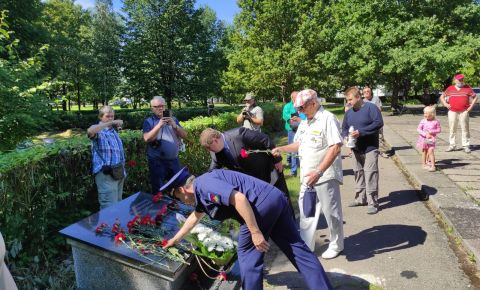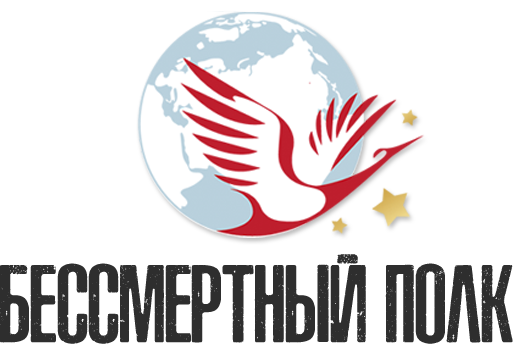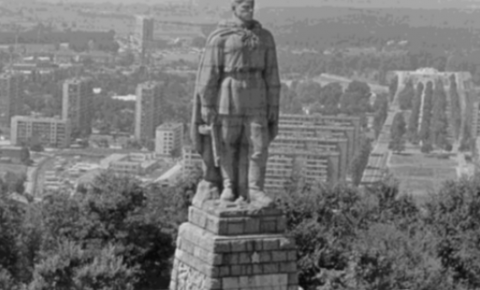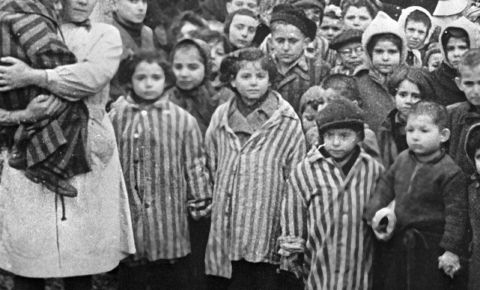The Soviet Union completed its Baltic Strategic Offensive
The Soviet Union completed its Baltic Strategic Offensive on November 24, 1944. The goal was to defeat the Nazi contingent in the Baltic region and completely free Estonia, Latvia and Lithuania. The offensive lasted 71 days.
Under the Third Reich’s plans, the Baltic region was supposed to become part of the German Reichskommissariat Ostland (RKO). The population was to be partially exterminated, moved to the east, or “Germanised.”
In 1941-1944, the Nazis and their accomplices killed 95 percent of the Jews in Lithuania (about 220,000 Jews lived there prior to the war). About 70,000 Latvian Jews were killed in Latvia (90 percent of all Jews that lived there before the war). About 20,000 Jews brought there from other countries were also killed. In the autumn of 1942, two trains with Jews from the Czechoslovakia and Germany arrived in Tallinn. Estonian security forces shot 1,650 of them in the area of Kalevi-Liiva. In all, during the war, the Nazis and their accomplices killed over 300,000 civilians in Latvia and about the same number of POWs. In Estonia they killed about 61,000 civilians and 64,000 Soviet POWs, and in Lithuania 150,000 civilians and 230,000 POWs.
It was strategically important for the Nazis to hold the Baltic region. First, this allowed them to control shipments via the Baltic Sea. Second, the Baltic region served as a gate to East Prussia. This is why Hitler’s Army Group North contained many prewar units with extensive combat experience. The group had about 700,000 troops. The forests and marshlands of the Baltic region made it easier to build effective defences.
However, by the end of the summer in 1944, the Nazi troops were pressed against the Baltic Sea by Soviet units. They were under the real threat of being cut off from the main Wehrmacht forces and falling into the trap that they tried to impose on the Anglo-French armies in Dunkirk or the Soviet troops in Leningrad not long before.
The Soviet troops involved in the Baltic offensive had 1.21 million men, about 11,000 weapons (not counting anti-tank guns), as well as 2,300 tanks and self-propelled artillery systems. Every army division assigned to the offensive had special assault battalions. Soldiers were carefully selected and underwent training for ten days.
On September 14, the Baltic Front troops launched an offensive towards Riga. Supported by dense artillery fire, Soviet troops prevailed at some sections of the front and breached enemy defences. The Nazis offered fierce resistance and counterattacked. They moved fresh forces to the most difficult parts of the front but failed to contain the Red Army.
Units from the Leningrad Front launched an offensive on Tallinn. By September 26, a big part of Estonian territory was freed from the Nazi occupants. Soviet troops routed four infantry divisions, five artillery regiments, destroyed about 30,000 enemy soldiers and officers and captured about 16,000 POWs.
As early as October 10, most of the Nazi’s Baltic forces were cut off on the ground from the main Wehrmacht forces. By the end of autumn, Leningrad Front units and the Baltic Fleet had pushed the Nazis back from the largest part of the strategically important Moonsund Archipelago off the Estonian coast.
As a result of the Soviet offensive, the Nazi Army Group North was expelled from almost the entire Baltic region and lost the communications that linked it with East Prussia on the ground. Of 59 divisions, 26 were defeated and three were completely destroyed. The remaining forces from this group were pushed to the sea in Courland and the area of Memel. With the defeat in the Baltic region Germany lost an advantageous strategic area that provided freedom of action to its fleet in the eastern part of the Baltic Sea, as well as an important industrial, raw materials and food base. The length of the Baltic front was reduced to 250 km, which allowed the USSR to release considerable forces and use them in the offensive in the winter of 1945.
During the Baltic offensive, 112 Soviet personnel were awarded the title of Hero of the Soviet Union, three the second Gold Star medal; over 332,000 received orders and other medals. At the same time, 131 units were conferred honourable titles linked to the name of the cities they liberated, such as Riga, Tallinn and Valga, to name a few, while 481 units received state awards.
 В Каунасе прошли памятные мероприятия в день освобождения города от немецко-фашистских захватчиков
В Каунасе прошли памятные мероприятия в день освобождения города от немецко-фашистских захватчиков
1 августа 2021 года в день 77-й годовщины освобождения города Каунаса (Литва) от немецко-фашистских захватчиков советник-посланник Сергей Рябоконь и военный атташе при Посольстве России в Литве Олег Давлетзянов совместн...
01 Aug 2021





